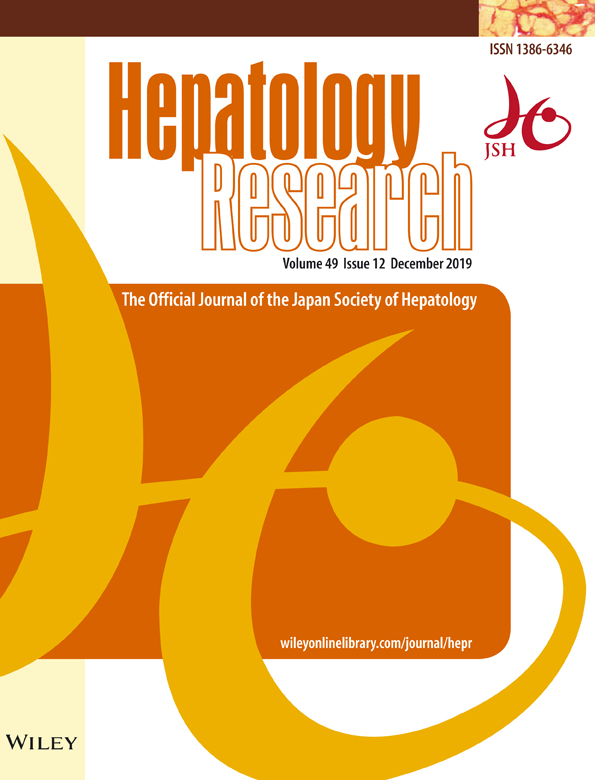Long-term outcome of hepatocellular carcinoma occurrence, esophageal varices exacerbation, and mortality in hepatitis C virus-related liver cirrhosis after interferon-based therapy
Abstract
Aim
The long-term effects of sustained virologic response (SVR) to antiviral therapy on the risk of liver complications, such as exacerbation of esophageal varices (EV), hepatocellular carcinoma (HCC), malignant lymphoma, and liver-related and overall death in hepatitis C virus (HCV)-infected patients with liver cirrhosis are not fully known.
Methods
These risks were evaluated during long-term follow up of 457 patients with HCV-related Child–Pugh Class A liver cirrhosis without history of HCC.
Results
The respective cumulative 5- and 10-year rates of EV exacerbation were 2.0% and 3.1%. Multivariate analysis identified the presence of EVs, thrombocytopenia at baseline. and alcohol intake as significant independent predictors of EV exacerbation before and after SVR. The cumulative 5- and 10-year rates of HCC were 6.8% and 10.2%, respectively. Male sex and the presence of EV were significant independent determinants of HCC before and after SVR. Although the cumulative 5-year HCC recurrence rate was 49.4%, the overall survival rate since HCC was 73.6% at 5 years. The overall survival rates since SVR were 98.7% and 93.6% at 5 and 10 years, respectively. Progression of HCC was the most frequent all-cause mortality, but none of the patients died of liver decompensation. Male sex and Fibrosis-4 index of ≥3.0 after SVR were significant and independent predictors of mortality.
Conclusion
Patients with HCV remain at risk of HCC for >10 years after achieving SVR, and HCC is the most common cause of mortality. We recommend long-term surveillance of cirrhotic patients with HCV, even after achieving SVR.




